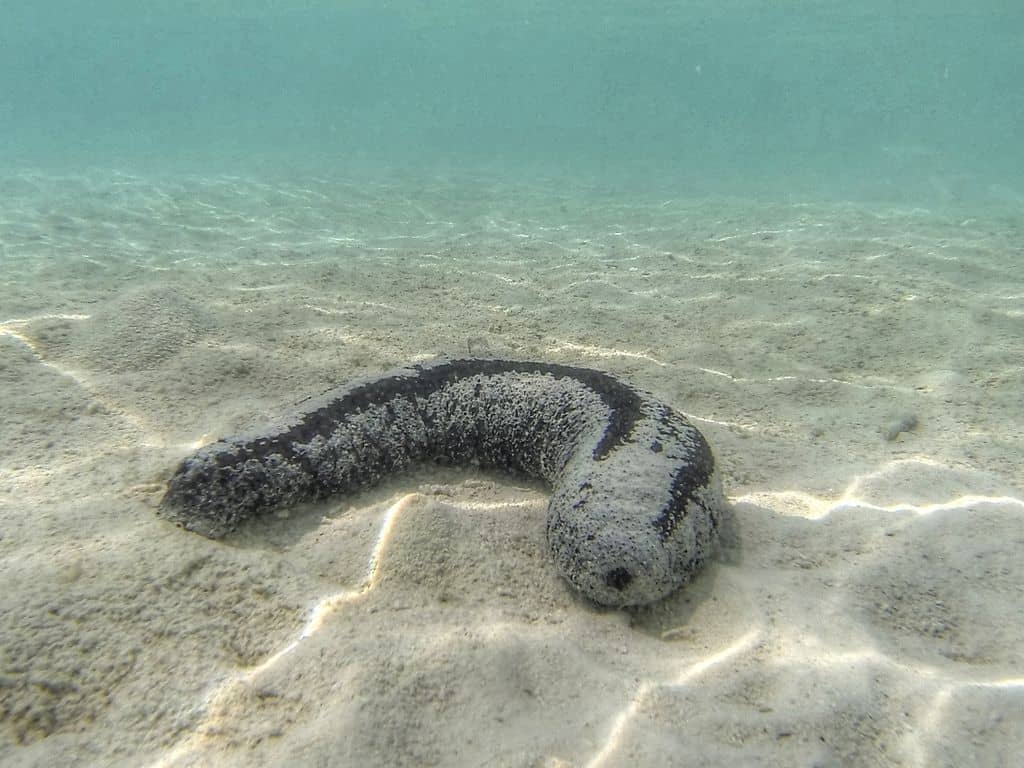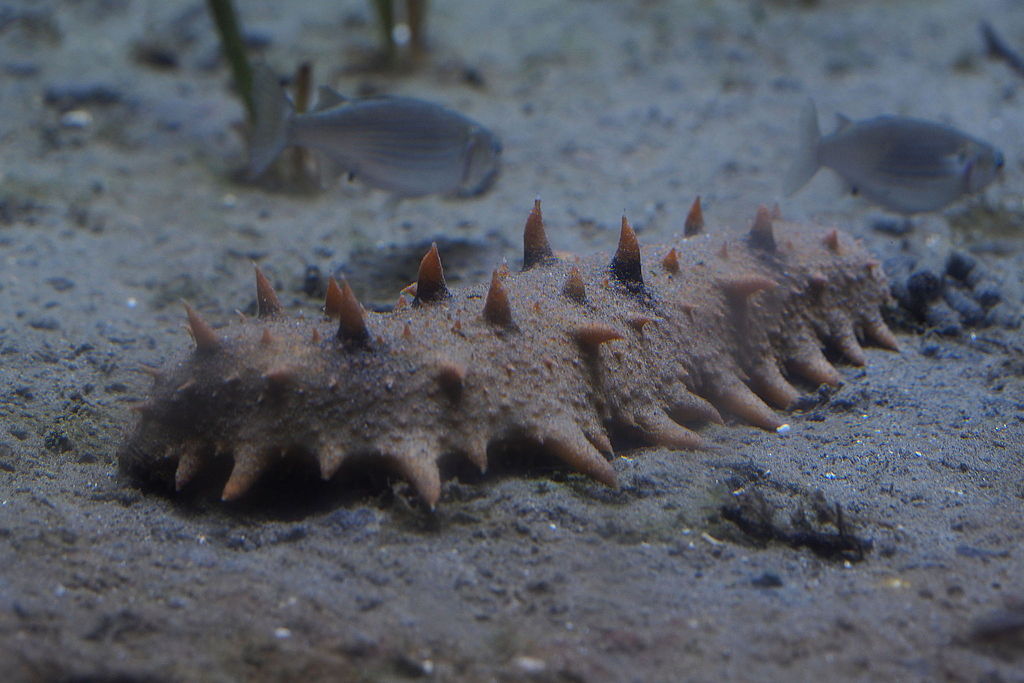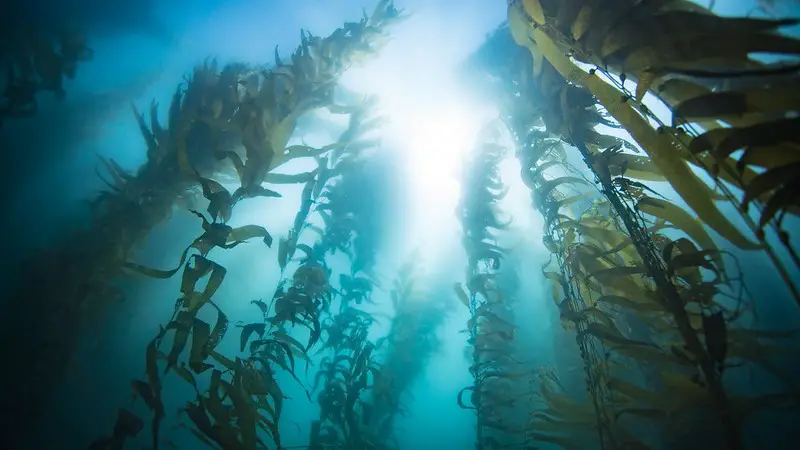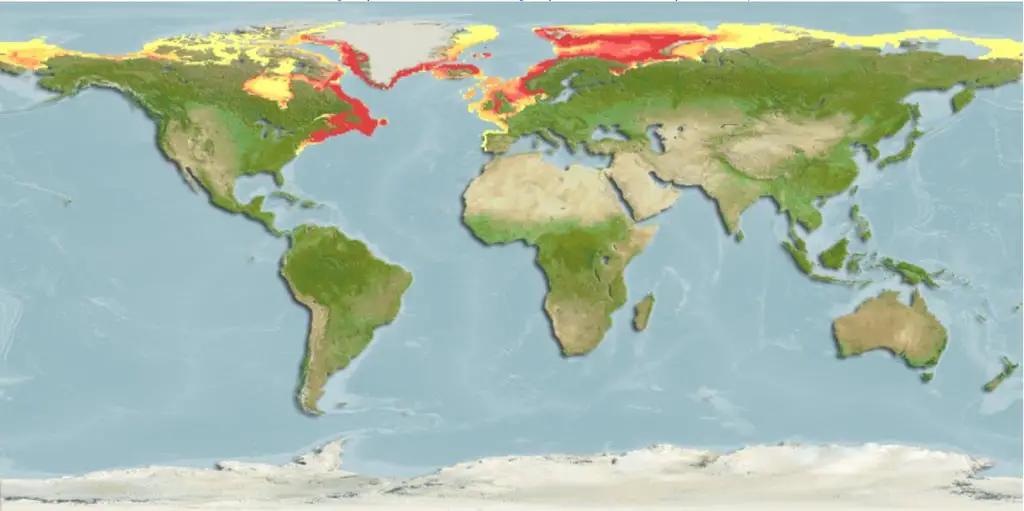Where Do Sea Cucumbers Live?
Sea cucumbers are animals we can often encounter when snorkeling or diving in any ocean or sea. I remember when I first saw these creatures in the warm waters of Panama, but then I found them in Croatia, which is a completely different part of the world. Have you wondered where exactly sea cucumbers live? In this post, we’ll talk all about that but let’s start with a quick answer.
Sea cucumbers live in every ocean and every water depth. Many species adapted to different environments, such as coral reefs, sandy bottoms, rocky intertidal shores, seagrass meadows, mud, and even kelp forests. They can live in warm tropical temperatures but also in very cold waters.
However, this certainly doesn’t tell the whole story. Below I’ll explain to which environments sea cucumbers have adapted and what’s their geographic and depth range. Furthermore, I’ll explain whether sea cucumbers can live in freshwaters or not. Read on!
Sea cucumber habitat
Sea cucumbers live in all marine benthic zones, from the splash zone of the intertidal pools to the depths of oceanic trenches. Some species adapted to living on rocky coasts, but others on sandy bottoms. Below you can see the description of the sea cucumbers’ habitat.
Coral reefs

Coral reefs are the most diverse underwater ecosystems in the world. They’re formed by colonies of coral polyps held together by calcium carbonate. These incredible formations are home to 25% of all marine species.
Coral reefs are the perfect home for many sea cucumber species due to the amount of food and shelters to hide from bigger animals. Sea cucumbers are reefs’ “vacuums” and mostly prey on plankton, algae, and decaying organic matter. Their biggest predators, however, are sea stars, Partridge Tun snail, crabs, lobsters, some fish species, turtles, sharks, seals, walrus, and humans.
Sea cucumber species in coral reefs are very diverse. We can find there leopard sea cucumber, brown sandfish, and many, many more.
Seagrass meadow

A seagrass meadow is an underwater ecosystem formed by seagrasses found in shallow waters of all continents except Antarctica. Seagrasses are among the most productive ecosystems in the world by providing habitats and food for marine animals comparable to even coral reefs.
Deposit-feeding sea cucumbers feed on the organically enriched sediments present around seagrass rhizomes. Interestingly, the presence of sea cucumbers in seagrass beds can enhance seagrass growth due to improved nutrient cycling when these species are present.
Moreover, seagrasses provide an important nursery resource for juveniles for sea cucumbers and other echinoderms such as sea urchins and sea stars. An example of sea cucumber species that lives in seagrass meadows is the sandfish.
Tide pools

Tide pools are isolated pockets of seawater formed in the ocean’s rocky or sandy intertidal zones (shallow seashores). Even though these small pools are about a few inches to a few feet deep, they’re full of life, including snails, clams, sea urchins, seaweed, small fish, and sea cucumbers.
To survive in this harsh environment, tide pool inhabitants often attach themselves very tightly to rocks so they’re not washed ashore. Sea cucumbers can do that thanks to their suction cups at the tips of their tube feet. The animal controls the tube feet by changing the water pressure inside its canal system (water vascular system).
Not all echinoderms have adapted to conditions in tide pools due to high temperatures and high water salinity. Sometimes during low tides, animals become trapped in small pools of water and remain there until the high tide. An example of sea cucumber species living in these conditions is Afrocucumis Africana.
Sand

Some sea cucumber species live on sandy bottoms where they can burrow themselves to hide or search for food. They dig into the sand using their tube feet, and once entirely hidden, they extend their tentacles surrounding their mouth into the water to catch passing food particles.
Next, they bend and bring one tentacle at a time into the centrally located mouth opening. Filter-feeder species use this feeding method, and their tentacles are usually bigger and feather-like, so passing plankton can get trapped easier.
Sea cucumbers play an essential role in the seabed’s biological processing by filtering sediments and recycling nutrients back to the environment. After they break down the organic matter, the nutrients are available for smaller animals.
This way, we can say that sea cucumbers poop is even cleaner than the sand that they hadn’t consumed yet. An example of sea cucumber species living in the sand is sandfish or black sea cucumber.
Mud

Mud is another habitat that provides a great hiding spot. In addition to that, the mud substrate is rich in organic detritus and microbes which help in sea cucumbers’ growth and development. The species that live in these conditions burrow themselves to hide from predators.
An example of species living in this habitat is A. japonicus also known as the Japanese spiky sea cucumber or the Japanese sea cucumber.
Kelp forests

These underwater ecosystems were formed in shallow water by the dense growth of several different species known as kelps. Even though kelps look like plants, they are actually huge brown algae.
They are one of the most productive and dynamic ecosystems on Earth by providing a unique habitat for many marine organisms. They’re located along the west coast of North and South America, southern Africa, Australia, New Zealand, the north part of Japan, and the North Sea.
An example of the sea cucumber species that live in the kelp forest is the California sea cucumber.
Sea cucumber geographic range
Sea cucumbers live in every ocean and every depth. They’re very common in the Indian Ocean and western Pacific but many species have adapted to the cold waters of the North Atlantic and the Arctic Ocean.
An example of sea cucumber species living in cold waters is Elpidia glacialis or Cucumaria frondosa. Below you can see the distribution map of the Cucumaria frondosa species.

An example of common sea cucumber species living in warm waters is chocolate chip sea cucumber or black sea cucumber but there are many many more.
Do sea cucumbers live in deep water?
Sea cucumbers adapted to all water depths, ranging from shallow areas of the intertidal zone to the bottom of the deepest part of the ocean. In shallow waters, sea cucumbers very often form dense populations.
An example of sea cucumber species that lives in shallow waters is the strawberry sea cucumber. The strawberry cucumber’s density on New Zealand’s rocky shores is so big (reaching 1,000 animals per square meter) that they call this area the strawberry field.
When it comes to the deep waters, sea cucumbers were found deeper than 9,000 meters (5.6 miles) and even 10,687 meters (6.65 miles) deep, so there are really no depth limits for these creatures. An example of a sea cucumber that lives in deep waters is Enypniastes eximia.
Interestingly, the bodies of some deep water sea cucumber species look completely different from common species we often see close to the shore. Their body walls can be translucent or even transparent, made of a tough gelatinous tissue with unique properties that allow the animals to control their buoyancy.
The ability to control buoyancy allows these deep water sea cucumbers to swim. Surprisingly, most cucumbers can swim, but they mostly use this skill as an emergency exit to escape predators. Enypniastes eximia swims or floats actively looking for food and avoiding predators.
Can sea cucumbers live in freshwater?
Sea cucumbers are exclusively marine animals and cannot survive in freshwater due to their state of isotonic stability with the surrounding saltwater. This means that the same amount of water moves between body tissues and the saltwater.
Like closely related sea stars, sea cucumber bodies’ tissues, the cells, have a permeable membrane that allows water to flow in and out of the cell body, helping to soothe the cell’s vital needs. Thus, the water will always flow to an area with a higher concentration of salts and minerals through a permeable membrane.
If you throw a sea cucumber into freshwater, the state between the animal and the surrounding water is unstable. The cells contain higher ions of salt and other minerals. Water invades cells, causing them to swell and eventually break. This kills cells as minerals try to diffuse into the water and dilute.
Sea cucumbers are invertebrates and very simple organisms lacking the ability to actively push water out of cells. Vertebrates such as fish can do this because they have specialized organs like kidneys that help keep the body stable. This takes a lot of energy and a more complex organization of the body organs.
Sources
- In Byrne, M., In O’Hara, T. D., CSIRO (Australia), & Australian Biological Resources Study,. (2017). Australian echinoderms: Biology, ecology and evolution.
You may also like:

Welcome to Bubbly Diver!
I’m glad to see you here. This blog is created for all marine creature lovers by a bubbly diver - me, Dori :)


